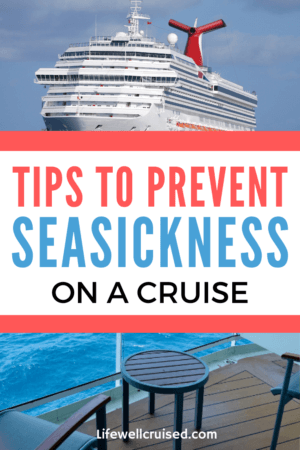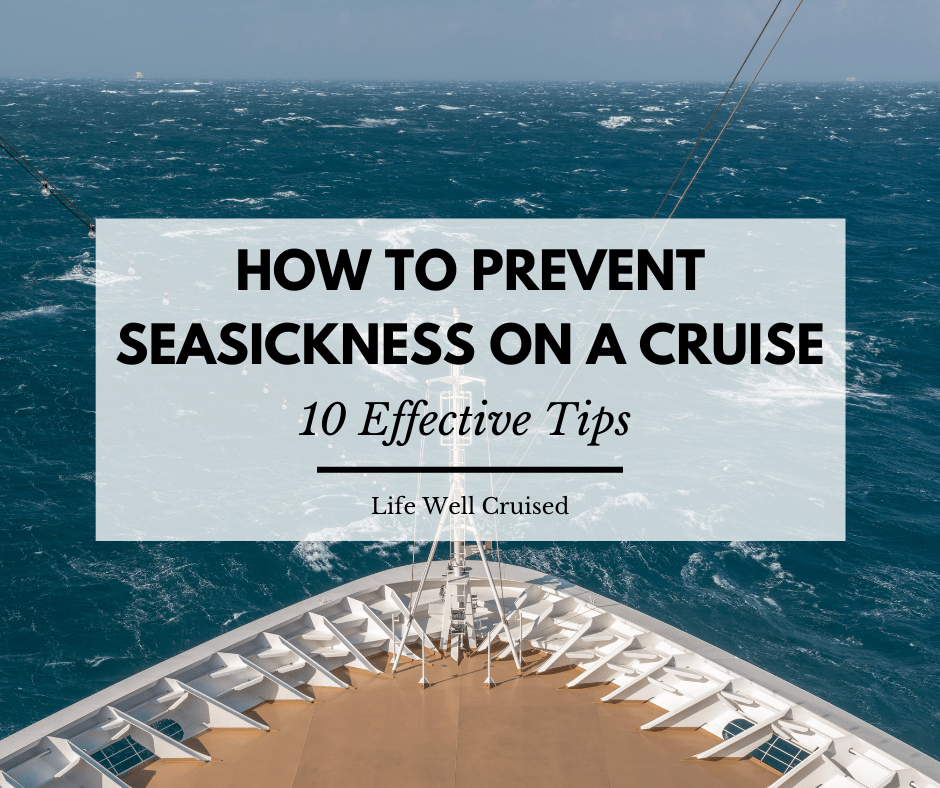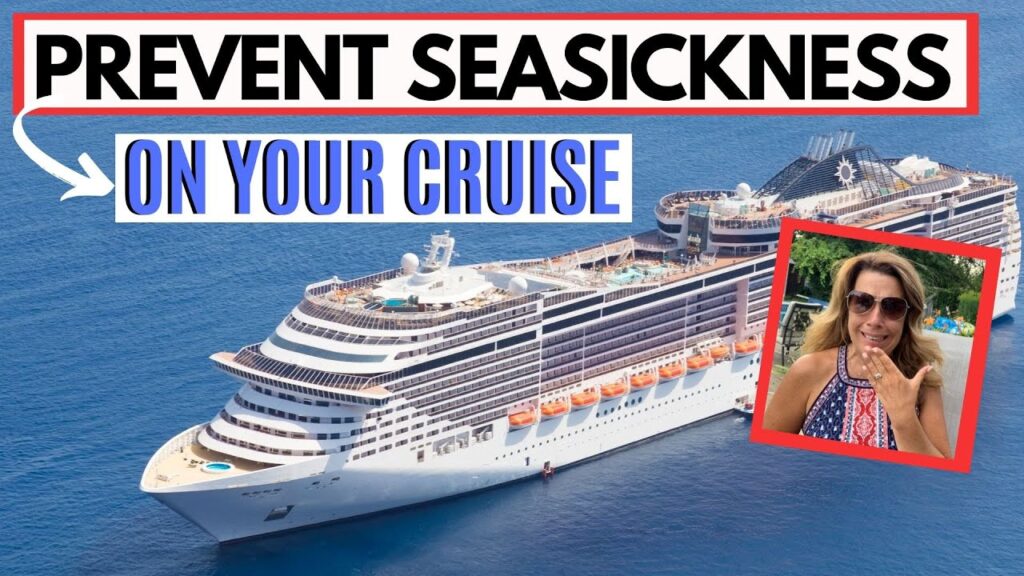If you’ve ever dreamt of embarking on a luxurious cruise but fear that seasickness might put a damper on your experience, fear not! This article is here to guide you on how to handle seasickness while on a cruise. From practical tips to natural remedies, you’ll discover effective ways to ensure smooth sailing and make the most of your journey on the open waters. So, wave goodbye to seasickness concerns and get ready to enjoy all the incredible adventures awaiting you on your cruise vacation.
Understanding Seasickness
Seasickness is a common condition that occurs when your body’s sense of balance is disrupted by the motion of a moving vessel, such as a cruise ship. It can be an unpleasant and uncomfortable experience, but understanding the causes and symptoms can help you better prepare and manage it during your cruise.
Causes of seasickness
There are a few key factors that contribute to the occurrence of seasickness. The primary cause is the motion of the ship, which can lead to a sensory conflict between what your eyes see and what your inner ears, responsible for balance, feel. This conflict can result in dizziness, nausea, and other symptoms associated with seasickness.
Symptoms of seasickness
Seasickness can manifest in various ways. The most common symptoms include nausea, dizziness, vomiting, headache, sweating, and general discomfort. These symptoms can range in severity depending on the individual and the conditions of the voyage. It is essential to recognize these symptoms early on to take appropriate preventive measures or manage them effectively during the cruise.

This image is property of foreverkaren.com.
Preventing Seasickness
While it may not be possible to completely eliminate the risk of seasickness, there are several strategies you can employ to minimize its impact and increase your chances of enjoying a smooth sailing experience.
Choose the right cabin location
When booking your cruise, consider selecting a cabin in the lower deck and closer to the ship’s center. These areas tend to experience less motion, which can help reduce the likelihood of experiencing seasickness.
Pack medication
Consult with your healthcare provider or a travel medicine specialist to discuss seasickness medications that may be suitable for you. Medications such as antihistamines and scopolamine patches can help prevent or alleviate symptoms. Remember to follow the instructions and take them as recommended.
Consider acupressure bracelets
Acupressure bracelets are believed to help alleviate seasickness by applying pressure to specific points on your wrists. While their effectiveness may vary from person to person, they are worth considering as a non-medicated alternative.
Avoid certain foods and drinks
Certain foods and drinks can exacerbate seasickness symptoms. Avoid consuming heavy, greasy, or spicy meals before and during your cruise. Additionally, limit your intake of alcohol and caffeine, as they can dehydrate you and contribute to nausea.
Get plenty of rest and stay hydrated
Ensure you are well-rested before embarking on your cruise. Fatigue can worsen seasickness symptoms. Additionally, staying hydrated by drinking plenty of water can help prevent dehydration, a common side effect of seasickness.
Focus on the horizon
When onboard, fix your gaze on a stable object, such as the horizon. This can help recalibrate your visual and inner ear senses, reducing the sensory conflict that causes seasickness.
Avoid reading or using electronics
Reading books, browsing on electronic devices, or any activity that requires close visual focus can increase the discrepancy between what your eyes see and what your inner ears feel. To avoid aggravating seasickness symptoms, it is best to refrain from engaging in these activities.
Avoid strong odors
Strong smells can trigger nausea and worsen seasickness symptoms. Avoid areas with strong odors, such as engine rooms or food preparation areas. Additionally, consider using unscented products to minimize any potential triggers.
Stay in a centralized location
When onboard, try to stay in the middle of the ship where the motion is generally felt less. Being in a central location can help minimize the sway and rocking sensations that contribute to seasickness.
Practice deep breathing exercises
Deep breathing exercises can help you relax and reduce feelings of nausea. Take slow, deep breaths, inhaling through your nose and exhaling through your mouth. This technique can help calm your body and mind, making it easier to manage seasickness symptoms.

This image is property of eczb779k8ip.exactdn.com.
Managing Seasickness During the Cruise
Even with preventive measures, you may still experience seasickness during your cruise. It is important to be prepared and know how to manage it effectively to ensure a pleasant trip.
Stay on the lower decks
If you start feeling seasick, moving to a lower deck can help minimize the motion you experience. Consider spending time in a lower interior space or even lying down until you start feeling better.
Sip on ginger or peppermint tea
Ginger and peppermint are natural remedies known for their calming effects on the stomach. Sipping on ginger or peppermint tea can help alleviate nausea and soothe your digestive system. Pack some tea bags or look for these flavors on the ship.
Use over-the-counter or prescription medications
If your seasickness symptoms persist or become severe, over-the-counter or prescription medications specifically formulated to treat seasickness can provide relief. Consult with the ship’s doctor or medical staff to determine the most suitable option for you.
Try natural remedies
In addition to ginger and peppermint tea, there are other natural remedies you can explore. Some people find relief with essential oils like lavender or chamomile, while others swear by consuming green apples or wearing elastic wristbands that apply pressure to specific points.
Stay active and distract yourself
Engaging in light physical activities or participating in onboard activities can help take your mind off the discomfort of seasickness. Movement can also help reorient your senses and mitigate the symptoms.
Engage in relaxation techniques
Including relaxation techniques like meditation, deep breathing exercises, or yoga can help calm your body and mind during a bout of seasickness. Find a quiet spot on the ship and focus on these techniques to alleviate your symptoms.
Use pressure point techniques
Similar to acupressure bracelets, there are pressure points on your body that, when stimulated, can help relieve seasickness symptoms. Familiarize yourself with these pressure points, such as the inside of your wrist or the area between your thumb and index finger, and gently apply pressure when needed.
Visit the ship’s doctor
If your seasickness becomes severe or persists throughout your journey, do not hesitate to seek the assistance of the ship’s doctor. They are trained to deal with seasickness and can provide further medical remedies or advice tailored to your situation.

This image is property of lifewellcruised.com.
Tips for Dealing with Seasickness
While prevention and management techniques are vital, there are additional tips you can keep in mind while on a cruise to ensure you navigate through seasickness effectively.
Listen to your body
Pay attention to your body’s signals and take breaks or rest when necessary. Pushing yourself can exacerbate seasickness symptoms and make the overall experience more challenging.
Notify the ship’s crew or medical staff
If you experience severe seasickness or require medical assistance, do not hesitate to inform the ship’s crew or medical staff. They are there to help and can provide the necessary support to make your journey more comfortable.
Seek fresh air
Stepping outside and getting some fresh air can have a surprisingly calming effect on seasickness. Head to an open deck or designated outdoor area to breathe in the fresh sea breeze.
Stay away from strong smells
As mentioned earlier, strong smells can worsen seasickness symptoms. Be mindful of the areas you visit and try to avoid locations with overpowering scents.
Avoid excessive alcohol consumption
Consuming excessive amounts of alcohol can dehydrate you and exacerbate seasickness symptoms. It is best to moderate your alcohol intake while onboard and opt for hydrating beverages instead.
Stay hydrated with water
Proper hydration is crucial for managing seasickness. Drink plenty of water throughout the day to stay adequately hydrated and minimize the chances of dehydration-related symptoms.
Avoid large meals
Eating large, heavy meals can make you feel more uncomfortable if you are prone to seasickness. Opt for smaller, lighter meals that are easier to digest to reduce the strain on your stomach.
Keep an eye on the weather forecast
Monitoring the weather forecast can help you anticipate rougher sea conditions and take appropriate measures to manage seasickness. Preparedness is key in ensuring a smooth sailing experience.
Take it slow when disembarking
Once your cruise has come to an end, take your time when disembarking from the ship. The sudden transition from the ship’s motion to stable land can cause dizziness and disorientation. Allow yourself a few moments to adjust before diving into your next adventure.
Consider alternative transportation
If the fear of seasickness is overwhelming or you have had particularly unpleasant experiences in the past, consider alternative transportation options for your future travels. Cruising is just one way to explore the world, and there are plenty of exciting destinations accessible by other means.

This image is property of lifewellcruised.com.
Seasickness Myths Debunked
Seasickness is often misunderstood, and several myths surrounding this condition persist. Let’s take a moment to debunk some of the most common misconceptions.
Eating greasy foods prevents seasickness
Contrary to popular belief, consuming greasy foods is unlikely to prevent or cure seasickness. In fact, heavy meals can make you feel more uncomfortable and may exacerbate symptoms. Opt for lighter, easily digestible meals instead.
Only weak or inexperienced travelers get seasick
Seasickness does not discriminate based on strength or experience. It can affect anyone, regardless of their travel history or physical condition. Even seasoned travelers can be susceptible to seasickness under the right conditions.
Seasickness can ruin your entire vacation
While seasickness can be challenging to manage, it does not have to ruin your entire vacation. With the proper preventive measures and management techniques, you can still enjoy your cruise and make memorable experiences.
You can’t get seasick on larger cruise ships
Larger cruise ships are designed to minimize the effects of motion, but they are not entirely immune to causing seasickness. The size of the ship can help reduce the severity of the motion, but individuals who are prone to seasickness may still experience symptoms.
Seasickness is all in your head
Seasickness is a real and physical response to the sensory conflict caused by the motion of the ship. It is not simply a psychological reaction, and dismissing it as such can undermine the experiences of individuals who genuinely struggle with seasickness.
In conclusion, understanding seasickness and taking proactive steps to prevent and manage it can significantly improve your cruising experience. By choosing the right cabin location, packing medication or natural remedies, focusing on the horizon, and employing various relaxation techniques, you can increase your chances of enjoying a smooth sailing adventure. Remember to listen to your body, seek assistance when needed, and debunk the myths surrounding seasickness. Bon voyage!

This image is property of i.ytimg.com.
Hi, I’m Mike, the author of Ocean Bliss Journeys. Thank you for visiting 🙂

